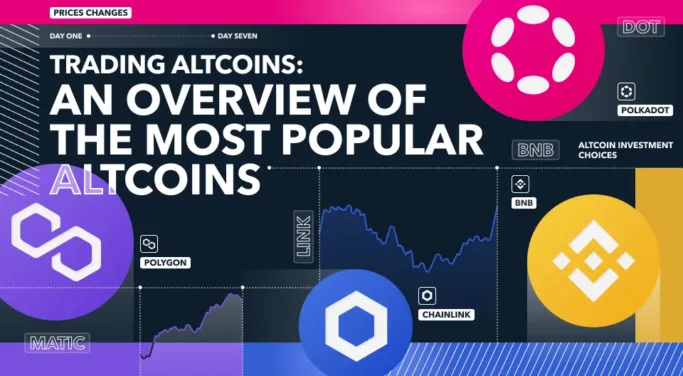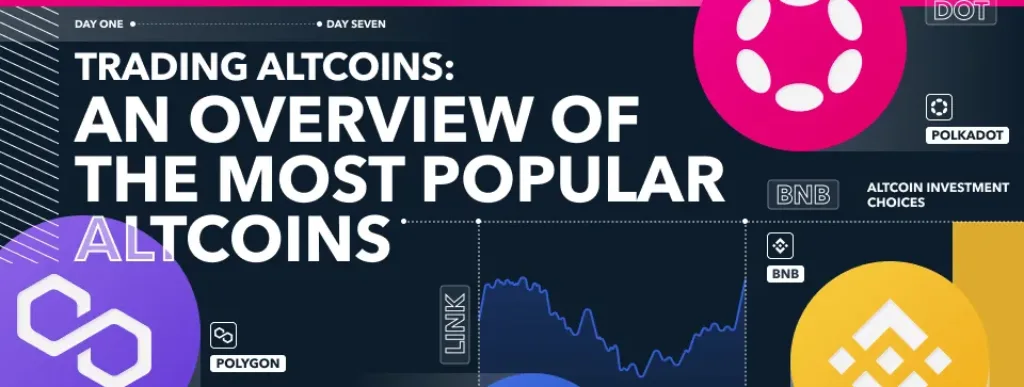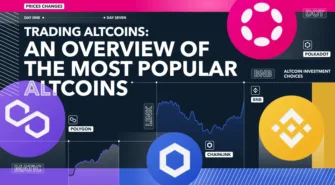Bitcoin (BTC) was the first cryptocurrency to launch and it’s the most famous cryptocurrency by some distance. Right up until the present day, it has the largest market capitalisation of any digital currency.
Its early and ongoing success meant that it wouldn’t stay the only blockchain network or cryptocurrency for long. Since Bitcoin’s launch, many new crypto assets, often called ‘altcoins’, have come to market.
The first of these alternatives to Bitcoin was Litecoin, which remains popular to this day. It launched onto the market in 2011.
Litecoin is a ‘hard fork’ of Bitcoin, intended to speed up and lower the fees of on-chain transactions. If the market thought of Bitcoin as ‘digital gold’, it thought of Litecoin as ‘digital silver’. That’s even though these new forms of digital assets had no connection to precious metals.
In 2024, the number of altcoins listed on cryptocurrency exchanges has topped 10,000, according to CoinMarketCap. CoinTelegraph speculates that there may be 21,000+ alternative coins available.
The number of live cryptocurrencies other than Bitcoin rises and falls as many coin projects never gain market traction and fail.
In this article, we’ll look at the most popular altcoins for traders and investors in 2023 and analyse why they’re popular.
Introduction to altcoin trading in 2024
Altcoin trading in 2024 looks very different to how the earlier years and some of the first ‘altcoin seasons’.
Certain altcoins such as Bitcoin Cash and Dash have fallen out of favour. In the meantime, new entrants like Polygon’s MATIC token have become popular as tradable altcoins.
Here are some of the most traded and invested altcoins in 2024, along with what makes them popular or unique:
- Ethereum (ETH): Ethereum is the second-largest cryptocurrency by market capitalisation. It is the most popular blockchain platform for decentralised applications (dApps).
Ethereum is unique in that it allows developers to create smart contracts. These are self-executing contracts that you can use to automate a variety of financial and other transactions.
- Binance Coin (BNB): Binance Coin is the native cryptocurrency of the Binance exchange. This is one of the largest crypto exchanges in the world. BNB pays for fees on Binance and you can buy other cryptocurrencies with it on the exchange.
- Chainlink (LINK): Chainlink is a decentralised oracle network that ytrackes prices on-chain for DeFi platforms and decentralised exchanges.It also uniquely connects smart contracts to real-world data from outside the blockchain like the price of a stockor a weather forecast.
- Polkadot (DOT): Polkadot is a protocol that allows different blockchain networks to talk to each other. This means you can transfer data and tokens between different blockchains.
Polkadot is one of the first blockchain protocols to achieve this level of interoperability. This could lead to greater scalability in the cryptocurrency ecosystem.
- Cardano (ADA): Cardano is a popular third-generation blockchain platform. It’s intended to be more scalable and efficient than previous blockchains.
Cardano uses a proof-of-stake consensus mechanism. This is more energy-efficient than the proof-of-work mechanism used by BTC and ETH.
- Polygon (MATIC): Polygon is a popular layer-2 scaling solution for Ethereum. It allows Ethereum developers to build and launch more scalable, efficient dApps than dApps on Ethereum.
- Solana (SOL): Solana is a highly scalable, fast and efficient blockchain technology platform.
Solana uses a proof-of-history consensus mechanism, a variation of the proof-of-stake consensus mechanism. It’s more efficient than the proof-of-work consensus mechanism used by Bitcoin and Ethereum.
- Dogecoin (DOGE): Dogecoin is another type of altcoin called a meme coin, created as a joke.
However, Dogecoin has become one of the most popular cryptocurrencies in the world. Dogecoin is unique in that it is one of the most accessible cryptocurrencies. It’s often used as a tipping currency on social media.
Analysing the Most Popular Altcoins
From the list above, even a cursory glance can identify a couple of major trends in popular altcoins:
- Community: For any web3 project, a buzzing and vibrant community is essential to success. You also need a large following of engaged fans willing to use the currency.
- Technology: The speed of innovation in the web3 space is astonishing, and far exceeds that of traditional finance. Tech like Layer-2 and below help earlier blockchains scale, get faster and keep fees low.
- Hype: Elon Musk single-handedly brought billions of dollars of value to Dogecoin and its community. He did this by tweeting that Tesla would accept it as payment.
Consistently generating hype is a key ingredient for all altcoins. That’s because they don’t have the benefit of Bitcoin’s first-mover advantage or brand recognition. - Typically, the best altcoins will perform well in all three of these areas, but often, as with Dogecoin, they only need two of three to do well.
Understanding altcoin market performance
Many investors consider a range of different metrics when considering the best altcoin to buy for their portfolios. Key examples include:
- Circulating supply: The total number of coins or tokens that are currently in circulation.
- Market cap: The total value of a cryptocurrency, calculated by multiplying the circulating supply by the current price.
- Altcoin price: The current price of a cryptocurrency. This is generally expressed in fiat currency or another cryptocurrency.
- Volume: The total amount of cryptocurrency traded in a given period.
- Last seven days: The price change of a cryptocurrency over the past 7 days.
You can use these metrics to assess which is the best altcoin to invest in by its value and to identify potential trading opportunities.
For example, a high market cap indicates that a cryptocurrency is widely held and that there is a large amount of liquidity.
A high price could indicate an overvalued cryptocurrency. A low price could indicate an undervalued cryptocurrency.
A high volume indicates that there is a lot of trading activity, which can be a sign of investor interest.
A positive price change over the past seven days indicates that a cryptocurrency is performing well. Concurrently, a negative price change indicates that it is performing poorly in crypto markets.
It is important to note that these metrics are just a starting point for evaluating a cryptocurrency.
You should consider other factors like the team behind a cryptocurrency, long-term project goals and the tech powering it.
Some additional metrics that you may want to consider when evaluating options for your altcoin wallet are:
- Transaction fees: The fees charged for sending transactions on a cryptocurrency’s network.
- Community: The size and activity of a cryptocurrency community.
- Development: The pace of development on a cryptocurrency’s codebase.
Making the right altcoin investment choices
This is not financial advice but you should apply the same principles to investing in cryptocurrency as any other type of asset.
Standard analytical methods you could use include:
- Technical: You evaluate an asset by analysing its price movements and patterns therein over time. Tools are available to analyse price movements like moving averages and support and resistance levels.
- Fundamental: This is evaluated by examining its financial health, leadership, and industry trends. These are the ‘fundamentals’. The belief is that, at some point, the price of an asset will align with its actual value as determined by the fundamentals.
- Utility: This is assessing an asset’s value based on its usefulness or benefits it offers. In the context of cryptocurrencies, this is their utility token value. This approach focuses on what practical uses a token has, like access to services or features within its network.
Each of these approaches has its own strengths and weaknesses. The best investment approach will vary depending on an individual investor’s goals and risk tolerance.
Major institutions started crypto hedge funds to take advantage of digital currency opportunities. That’s according to Kinesis Head of Content, Douglas Turner. He states:
“The appeal is clear: an alternative to the traditional banking system, providing new opportunities to market analysts, willing back new coins or startups with seemingly endless potential.”
Future Prospects of Altcoin Trading
More active wallets go live every day and more people interact with the blockchain. Over time, many of these people will trade altcoins via centralised or decentralised trading platforms.
People will do this as they look for an alternative to the deficiencies of fiat currency like high inflation and stagnating wages. There could be a future mass adoption of crypto as populations opt out of fiat, deciding they want more control over their money.
It is important to note that the cryptocurrency market is very volatile, and the prices of altcoins can fluctuate wildly. As such, it is important to do your research before investing in any altcoin.
This publication is for informational purposes only and is not intended to be a solicitation, offering or recommendation of any security, commodity, derivative, investment management service or advisory service and is not digital asset or cryptocurrency trading advice. This publication does not intend to provide investment, tax or legal advice on either a general or specific basis.



